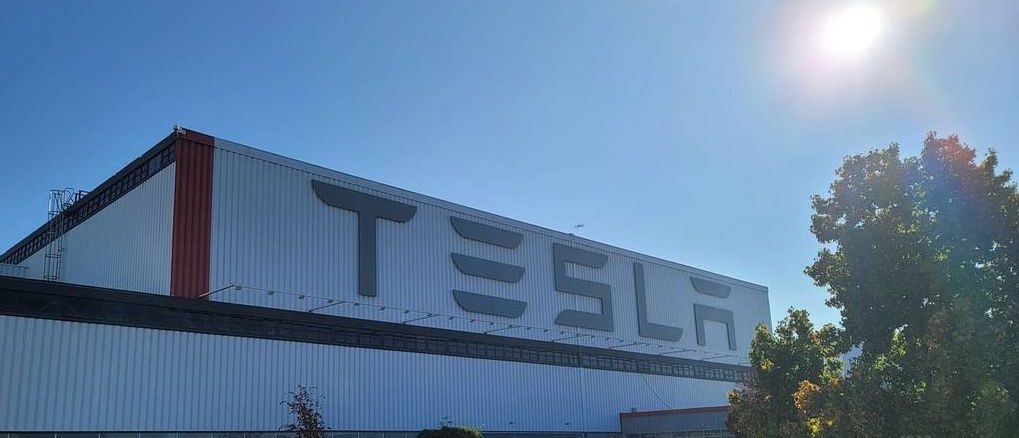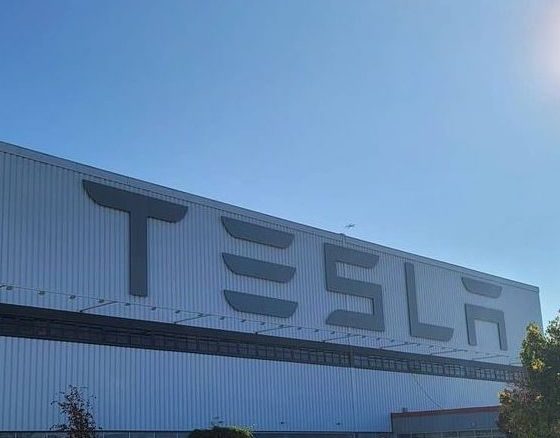

News
A look at Tesla’s potential new Gigafactory locations: Mexico, Canada, Indonesia or South Korea
Recent reports indicate that Tesla’s new gigafactory could be located in Mexico. The EV maker is expected to announce the location of its new factory this week.
Besides Mexico, there have been a few locations that Tesla has considered for its new gigafactory. Even if Mexico is Tesla’s new gigafactory location, the other places in the running are not completely out of the question.
Tesla North America
Canada and Mexico are the top choices for Tesla’s new gigafactory in North America. Cars made in either country would benefit from the United States’ new EV subsidies.
Between the two, Tesla appears to be leaning more towards Gigafactory Mexico. Although Tesla also appears to be considering a partnership with Canada for parts.
Tesla Giga Mexico
Sources close to the matter told Bloomberg News that Tesla plans to announce its new gigafactory in Mexico later this week. The plan will reportedly be located in Santa Catarina, Monterrey City. Tesla still has to iron out a few details regarding Giga Mexico.
The company has been talking with the state government of Nuevo Leon and Mexico’s foresight relations ministry over the past few weeks. The EV manufacturer has already established a good business relationship with the state government of Nuevo Leon.
Tesla has an exclusive customs lane for parts from the Nuevo Leon border into Texas. Another benefit to building in Mexico is that Tesla vehicles would still qualify for EV subsidies in the United States from the Inflation Reduction Act (IRA).
Tesla Giga Canada
Elon Musk teased a possible gigafactory in Canada during Giga Texas’ Cyber Rodeo event earlier this year. Tesla has been active in Canada these past few months through lobbying efforts and discussions with Canadian officials.
In September, Canada’s Minister of Industry Francois-Philippe Champagne stated that Tesla did discuss the possibility of building a factory in Canada. Earlier this year, Champagne emphasized that Canada hopes to be the auto industry’s new “supplier of choice.” Canada has the minerals and supplies automakers need to manufacture electric vehicles and EV batteries. In August, for instance, Volkswagen and Mercedes-Benz signed separate agreements with Canada for EV battery materials.
Tesla already has a facility in Canada that builds some of the machines the company uses in its gigafactories worldwide. A gigafactory in Canada would also qualify for EV subsidies in the IRA.
Tesla Gigafactories in Asia
Gigafactory Shanghai will likely be Tesla’s main headquarters in Asia. However, as the EV maker expands its presence in all of Asia, it would need to partner with more Asian countries. Indonesia and South Korea are two viable partners that could boost Tesla’s supply chain and presence in the East.
Tesla Indonesia
Elon Musk has met with Indonesia’s President Joko “Jokowi” Widodo multiple times this past year. Jokowi has been working hard to establish a relationship with Musk and form a partnership between Indonesia and Tesla.
In August, Tesla reportedly signed a nickel contract with Indonesia worth $5 billion. Indonesia has major nickel reserves, attracting car makers worldwide, like Tesla. However, Jokowi emphasized his desire to build fully electric vehicles in the country.
“What we want is the electric car, not the battery. For Tesla, we want them to build electric cars in Indonesia. We want a huge ecosystem of electric cars,” President Jokowi said.
Tesla South Korea
Last month, South Korea’s President Yoon Suk-Yeol reportedly talked with Elon Musk. According to officials in President Yoon’s office South Korea was a top candidate for Tesla’s next factory in Asia.
Elon Musk and President Yoon discussed Tesla increasing its cooperation with South Korea in terms of supply chain. The South Korean President also offered special incentives to encourage investments from Tesla and SpaceX.
“If Tesla, SpaceX or other companies are considering more investment in [South] Korea, including constructing a gigafactory, the government will do our best to support the investment,” President Yoon said.
Tesla is expected to announce the location of its next gigafactory later this week. Mexico appears to be the location of choice. However, given Tesla’s activities in other countries, Canada, Indonesia, and South Korea might not be entirely out of the running.
What do you think of these locations for Tesla’sTesla’s next gigafactory? Does Tesla need another partner in Asia? Tell us in the comments below.
If you have any tips, contact me at maria@teslarati.com or via Twitter @Writer_01001101.

Elon Musk
Elon Musk just said some crazy stuff about the Tesla Roadster

Elon Musk appeared on the Moonshots podcast with Peter Diamandis today to discuss AGI, U.S. vs. China, Tesla, and some other interesting topics, but there was some discussion about the upcoming unveiling of the Roadster, the company’s electric supercar that will arrive several years after it was initially slated for release.
Musk made some pretty amazing claims about the Roadster; we already know it is supposed to be lightning-fast and could even hover, if Tesla gets everything to happen the way it wants to. However, the car has some pretty crazy capabilities, some of which have not even been revealed.
On the podcast, Musk said:
“This is not a…safety is not the main goal. If you buy a Ferrari, safety is not the number one goal. I say, if safety is your number one goal, do not buy the Roadster…We’ll aspire not to kill anyone in this car. It’ll be the best of the last of the human-driven cars. The best of the last.”
🚨 Elon on the Roadster unveiling, scheduled for April 1:
— TESLARATI (@Teslarati) January 6, 2026
Musk makes a good point: people who buy expensive sports cars with ridiculous top speeds and acceleration rates do not buy them to be safe. They hope they are safe in case of an emergency or crash, but safety is not at the forefront of their thoughts, because nobody buys a car thinking they’ll crash it.
The Roadster is truly going to push the limits and capabilities of passenger vehicles; there’s no doubt about that. Tesla plans to show off the new version car for the first time on April 1, and Musk has only hinted at what is possible with it.
Musk said back in November:
“Whether it’s good or bad, it will be unforgettable. My friend Peter Thiel once reflected that the future was supposed to have flying cars, but we don’t have flying cars. I think if Peter wants a flying car, he should be able to buy one…I think it has a shot at being the most memorable product unveiling ever. [It will be unveiled] hopefully before the end of the year. You know, we need to make sure that it works. This is some crazy technology in this car. Let’s just put it this way: if you took all the James Bond cars and combined them, it’s crazier than that.”
Production is set to begin between 12 and 18 months after the unveiling, which would put the car out sometime in 2027. Hopefully, Tesla is able to stay on track with the scheduling of the Roadster; many people have been waiting a long time for it.
News
Tesla launches hiring for Robotaxi program in its twentieth country
Overall, the hiring signals Tesla’s aggressive timeline for global dominance in autonomous mobility.

Tesla has launched a hiring initiative for its Robotaxi program in its twentieth country, as the company posted two new jobs in Thailand this week.
Tesla is hiring in Bangkok and Kowloon for the Vehicle Operator position, which is related to data collection, and is the first in Thailand, but the twentieth country overall, as the company tries to expand into other markets.
🚨 BREAKING: Tesla is hiring additional full-time Vehicle Operators in Bangkok, Thailand.
Previous openings were 6-month, part-time roles. These are equivalent to AI Safety Operator roles in the U.S. pic.twitter.com/R6LzoU1bos— Tesla Yoda (@teslayoda) January 5, 2026
Tesla has had active job postings for Vehicle Operator positions in the United States, India, Israel, Taiwan, Germany, the Czech Republic, Hungary, the UK, Finland, Switzerland, Sweden, the Netherlands, Austria, Spain, Norway, Italy, and Turkey in past listings.
These postings are not all currently available, likely because the roles have been filled.
Thailand is the most recent, and broadens the company’s potential path to expanding its ride-hailing program, which is only active in the United States in Austin, Texas, and the California Bay Area, so far.
These roles typically involve data collection, which assists in improving Autopilot and Full Self-Driving operation. Tesla’s self-driving programs utilize real-world data that is accumulated and stored, observing vehicle and traffic behavior, as well as tendencies that are performed by human drivers to help increase safety and overall performance.
Overall, the hiring signals Tesla’s aggressive timeline for global dominance in autonomous mobility. Although the company has several high-profile rivals and competitors in the field, it has established itself as a main player and a leader in the development of autonomous technology, especially in the U.S., as its FSD suite is refined on almost a weekly basis.
The Full Self-Driving suite is available in seven countries and territories currently, including the U.S., Canada, China, Mexico, Puerto Rico, Australia, and New Zealand. Its biggest goal for expansion is currently the European market, where regulatory hurdles have been the main bottleneck prolonging its launch on the continent.
Tesla has performed months of testing in various European countries, including France and Spain, and does have support in some areas from various regulatory agencies. However, the company is hoping to get through this red tape and offer its suite in Europe for the first time, hopefully this year.
News
Tesla China rolls out Model Y upgrades, launches low-interest financing
These strategies are aimed at improving the ownership experience and keeping vehicle pricing competitive in the world’s largest electric vehicle market.

Tesla has rolled out minor updates to the five-seat Model Y in China, upgrading the vehicle’s center display to a higher-resolution 16-inch 2K screen. The electric vehicle maker also introduced attractive financing options, including 7-year low-interest rates, to offset the new purchase tax on EVs.
These strategies are aimed at improving the ownership experience and keeping vehicle pricing competitive in the world’s largest electric vehicle market.
Five-seat Model Y gets larger, better display
With its recent update, all three variants of the five-seat Model Y now feature an upgraded 16-inch 2K resolution center display, which replaces the vehicle’s previous 15.4-inch 1080p panel. This screen was already used in the six-seat Model Y L, and it offered improved visual clarity. Tesla China has also updated the Model Y’s headliner to black, giving the vehicle a sleeker appearance.
Prices of the five-seat Model Y remain unchanged at RMB 263,500, RMB 288,500, and RMB 313,500 for the respective trims. This update enhances the cabin experience as domestic rivals are already adopting high-resolution screens. As noted in a CNEV Post report, some domestic automakers have begun rolling out vehicles equipped with 3K-resolution displays.
New financing offers
Tesla also launched ultra-long-term financing offers for its locally produced models in China, which include the Model 3 sedan, the five-seat Model Y, and the six-seat Model Y L, through January 31, 2026. The 7-year option features an annualized fee rate as low as 0.5%, which is equivalent to 0.98% interest. This is expected to save customers up to RMB 33,479 ($4,790) compared to standard rates.
A 5-year zero-interest plan is also available, and it has been extended to the Tesla Model Y L for the first time. These incentives help offset China’s new 5% purchase tax on New Energy Vehicles (NEVs) in 2026-2027. Some of Tesla’s rivals in China have announced in recent months that they would be covering the purchase tax owed by buyers early this year.








